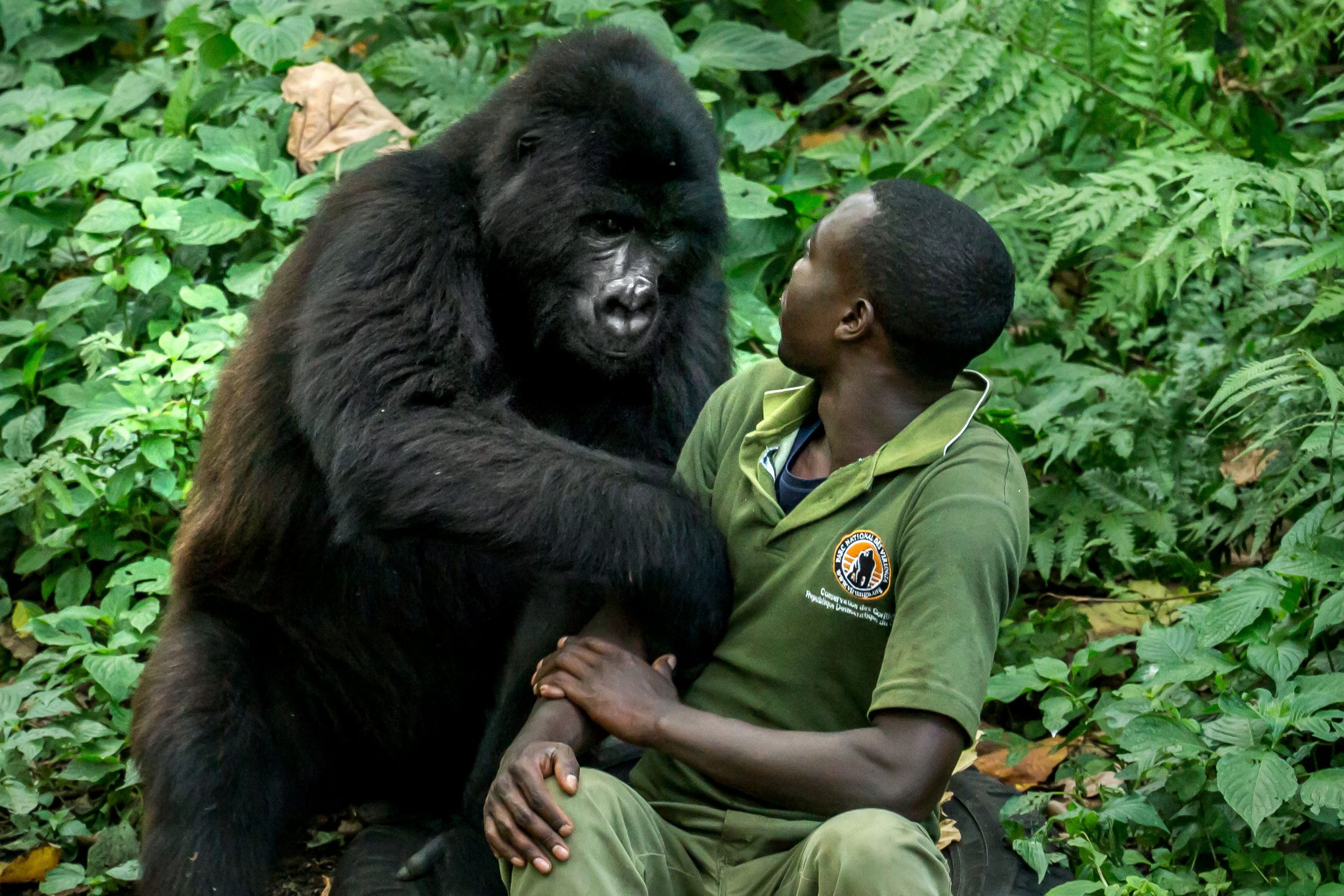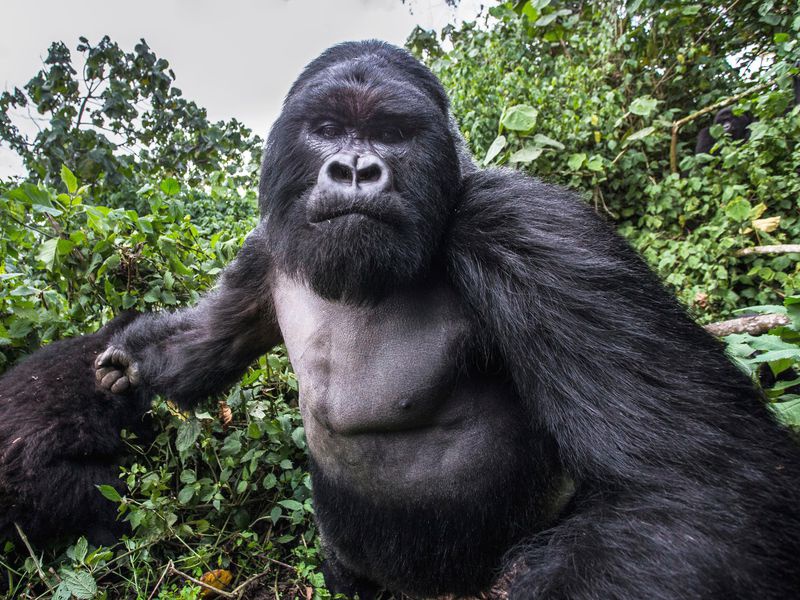Are Gorillas Dangerous Animals : Gorillas are ground dwelling endangered subspecies, reserved and very shy towards people. The gorillas are comprised of two subspecies that is the western critically endangered gorillas and the eastern mountain gorillas. The notable mountain gorillas are a subspecies of the eastern endangered that are found in countries of Rwanda, Uganda and Democratic Republic of Congo.
The mountain gorillas live within the tropical montane rain forest of Bwindi impenetrable national park and mgahinga`1 gorilla national park located in the south western Uganda, virunga national park in Congo and volcanoes national park in Rwanda. The mountain gorillas share 99% of the DNA to those of humans that’s why they have nose prints and thumbprints which are the same to human beings. These feed on vegetation such as roots, wild celery, tree bark, fruits and shoots
However, in the 19th century the mountain gorillas were intensively killed and poached. It’s of recent in 2018 when reports showed that the number of mountain gorillas had increased to over 880 individuals in the world and 400 individuals were found in Bwindi impenetrable national park.
HOW DANGEROUS ARE MOUNTAIN GORILLAS TO PEOPLE?
Mountain gorillas aren’t dangerous wild apes but need to be handled carefully. This is because when they are approached with aim of danger. They will give a warning before attacking and thus turn violent.
The mountain gorillas are being threatened by people if they behave I a bad way and human encroachment within their territory makes the silverback males to react with horrific hooting, roaring and bluff charges.
Before the mountain gorillas feel aggressive, they will send a warning by threatening and see if there’s any unexpected movements within their territory. For example the silver back will react in a horrific roar and if it gets aggressive it will run straight to the victim on a quick speed and stop in front of the person at a distance of one meter. Therefore, people are advised not to fight back in case of the attack rather look down on the ground with no fear. If you persist on running away, it will force the gorilla to run after you and harm you.

As well mountain gorillas are more dangerous to themselves when the silverback is trying to dominate the family, it will fight in that case. Therefore, the dominant silverback happens to fight with other silverbacks when they try to access the female gorillas within the family because it’s only male gorillas that are meant to mate all the females in the gorilla family.
In conclusion, the mountain gorillas aren’t dangerous wild apes but only fight back if their peace is disturbed through being threatened or intimidated even after a number warnings from them. To those who fail to follow the rules and guidelines given to them, the mountain gorillas have no option than to attack them.
HOW TO AVOID GORILLA ATTACKS?
The moment the gorillas give a warning or incase it sends a warning signal like beating their chest, victims are advised to act like gorillas themselves by tearing or eating vegetables, crouching down or make themselves small in front of them.
Tourists are advised to avoid flash cameras or flash light when they are in encounter with the gorillas. This is so because the flash lights make them insecure thus leading to an attack from them. Tourists or individuals should avoid direct eye contact with the gorillas and showing their teeth in their presence.
Tourists or individuals should keep a distance of one meter away from them and shouldn’t touch them because they are still considered as wild animals.
However the gorilla trekking can be carried out in Bwindi impenetrable national park and Mgahinga gorilla national park in Uganda, virunga national park in Congo and volcanoes national park in Rwanda. But while on the trek one needs to be mindful and careful of the advice in order to avoid any incident from the mountain gorillas within their natural habitats.
